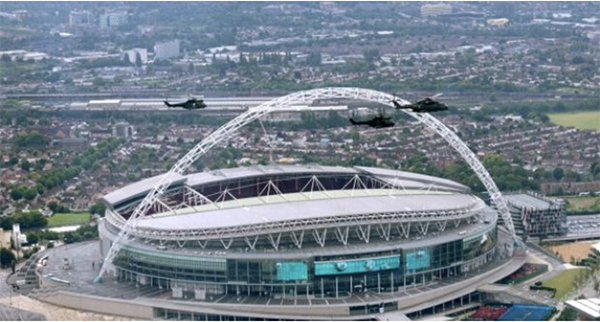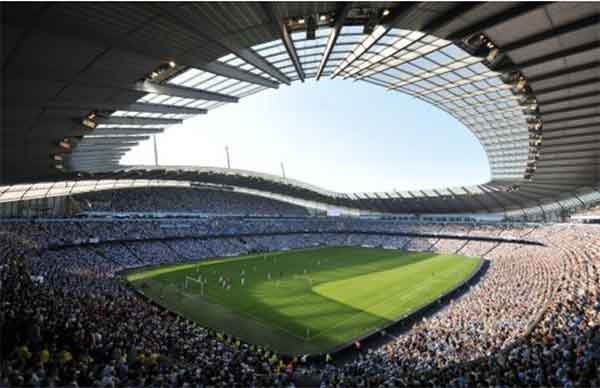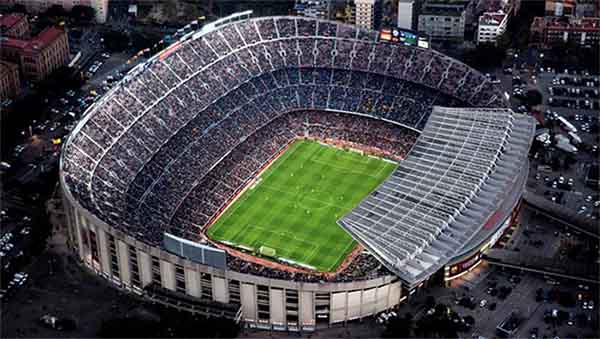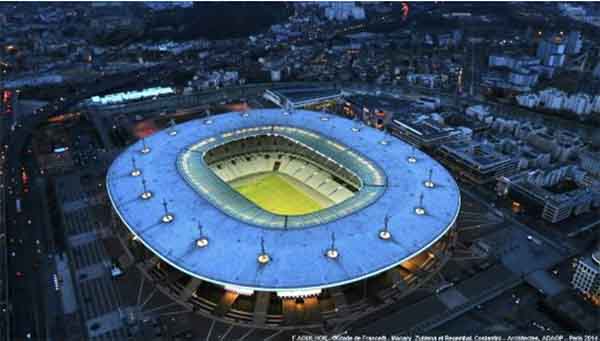Europe’s Most Extravagant Football Stadiums
Posted By: Bill Russell | December 18, 2018Stadiums have come a long way in the past few decades. From corrugated roofs and no seating, to having weatherproof seating capacity for tens of thousands of fans, along with special luxury experiences for a select few, stadiums in 2018 are truly a class apart. Let’s look at the list of some of the most extravagant sporting venues the European continent has to offer:
Wembley

Wembley had a £798 million facelift in 2007, with the crumbling concrete stadium and its wooden seats replaced by a sleek new look. The 134 metre high Wembley arch is a well-known landmark across London, and also supports 75% of the entire roofload. In addition to the iconic FA Cup final, Wembley has hosted some of the most notable sporting events to ever happen, including Champions’ League finals and England’s legendary 1966 World Cup triumph. With a seating capacity of 90,000, Wembley is the largest football stadium in England.
Etihad Stadium

Originally built to host the 2002 Commonwealth games, The City Of Manchester Stadium is currently known as Etihad Stadium for sponsorship reasons. Nonetheless, the stadium is an architectural marvel, and has been host to some truly significant sporting events such as the 2008 UEFA Cup Final and 2015 Rugby World Cup, among several others.
Old Trafford

With a capacity of 80,000, the home ground of the Red Devils is the biggest club stadium in the United Kingdom and the second largest football stadium in the country. Renamed as “The Theatre Of Dreams” by Bobby Charlton, the stadium has helped materialise dreams of fans and sports personalities since 1910. Apart from playing host to some of the most iconic football matches in British history, the stadium has also hosted two Rugby League World Cup finals, as well as the annual Super League Grand Final.
Santiago Bernabéu Stadium

The home ground of Real Madrid, Bernabeu Stadium is one of the biggest and most iconic stadiums in the World. It is also one of a select few venues to host both a FIFA World Cup final and a UEFA European Championship final. The popularity of the stadium, along with the several amenities available within are the reason the stadium has hosted the UEFA cup final on four occasions: in 1957, 1969, 1980, and 2010.
Camp Nou

Camp Nou is the biggest stadium in Europe, with a seating capacity of 99,354. The stadium could originally hold close to 120,000 people, but after UEFA outlawed standing sections in stadiums, the spectator capacity of the stadium was reduced to the current level. After the 1993-94 facelift, the stadium has been equipped with luxurious VIP boxes, press areas, and some of the most comprehensive corporate facilities ever offered in a stadium. During 1998–99, UEFA rated Camp Nou a five-star stadium for its services and functionalities.
Stade De France
When France was selected to host the 1998 FIFA World Cup, the country, along with the France Football Federation, made a commitment to construct a 80,000+ capacity all-seater stadium, and the result was the extravagant Stade De France. As the venue for the tournament’s final, the stadium witnessed the home team win their first ever World Cup . Post that, the stadium has been host to several iconic sporting events of different games, including rugby. The Stade De France is the biggest modular stadium in the World.
Conclusion
The enormity of these stadiums is only one of the many amazing and unique amenities present inside them. In fact, all these stadiums offer memorable VIP matchday experiences that boast unmatched luxury and plenty of reasons of excitement for true fans of the game. Hospitality management firms such as White Label Hospitality, offer such experiences tailored to your needs.